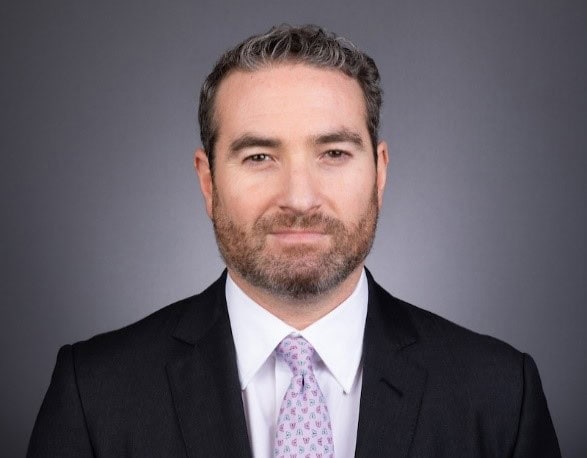After years of lackluster growth, foreign direct investment is growing.
As recent history has consistently demonstrated, there is nothing more certain than uncertainty. A pandemic, geopolitical tensions, trade frictions and even armed conflict have complicated the landscape for global foreign direct investment, leaving business leaders with no clear signals as they set priorities and make critical investment decisions outside their borders.
Adding urgency to the matter, there are now signs of a revival in FDI after a couple of years of decline. But the picture that is beginning to sort itself out is distinctly different from the past. Manufacturing shows promising signs of recovery while nearshoring and friendshoring in new markets are becoming stronger trends.
At an estimated $1.37 trillion, global FDI flows grew by a modest 3% year-on-year in 2023, according to preliminary figures from the United Nations Conference on Trade and Development (UNCTAD). But the top-line numbers obfuscate an enormously mixed picture beneath the surface.
Most strikingly, once a few European conduit economies are removed from the equation, global flows declined by some 18%. In the European Union, for instance, FDI jumped from negative $150 billion in 2022 to positive $141 billion in 2023, according to UNCTAD, but largely on the back of significant swings in Luxembourg and the Netherlands. Excluding these two countries, inflows to the rest of the EU fell 23%. North America saw zero growth, while other countries saw declines. Flows fell by 9% in developing countries to $841 billion.
A number of global, or at least large-scale, events have weighed on FDI in recent years, among them supply chain issues emanating from isolated yet significant incidents such as the 2021 grounding of the cargo ship Ever Given in the Suez Canal and the global semiconductor shortage, both of which had prolonged and costly impacts for multiple industries.

greatly affect FDI.
Geopolitical risks, trade wars and armed conflict have also played a part in creating friction for foreign investment. There is some evidence that a growing move toward protectionism since the pandemic is beginning to impact investment in some markets, as well. Together, these factors explain the somewhat muted year for FDI flows overall. But, as UNCTAD’s figures show, there are some shards of light.
The agency recorded a decline in international investment project announcements, particularly in project finance (21%) and mergers and acquisitions (16%). Greenfield project announcements dipped 6% in number but grew by 6% in value, driven in part by more encouraging numbers in the manufacturing sector.
The disruptive events of the past few years—Covid-19, conflict in Eastern Europe and the Middle East—have contributed to a profound shift in emphasis in FDI targeting. Before the pandemic-related disruption, a wider structural move toward services and knowledge-intensive FDI had contributed to a long-term decline in manufacturing investment. This exacerbated a trend that was emerging by the early 2010s, became amplified by the 2008 financial crisis, and was further aggravated by trade barriers put in place in the following decade.
That pattern appears to be reversing itself, with China trade tensions the catalyst.
“Although it is not yet back up to previous levels, the recovery in manufacturing FDI during 2023 is an encouraging sign,” says Richard Bolwijn, director of investment at UNCTAD, “particularly when you take into account the more recent tendency toward a decoupling and derisking of investment and trade between the US and China, as well as between other developed countries and China.”
According to the Stanford University Center on China’s Economy and Institutions, 50% of the overall decline in China’s imports from the US can be attributed to unofficial, non-tariff barriers, including administrative hurdles, inspections and quotas.
“As of 2022, it appears that while China was pulling back investment in the US, the US was actually increasing investment in China,” says Brett Ryan, senior US economist and director at Deutsche Bank Securities. “And while Chinese holdings of US Treasuries have declined notably since the pandemic, China’s holdings of agency securities and US corporate equities have picked up of late, though some of this is simply down to valuation increase.”
Cutting the Distance
Tensions between the US and China rank as the second-greatest driver of nearshoring and friendshoring, according to the 2024 Foreign Direct Investment Confidence Index produced by management consultant Kearney’s Global Business Policy Council. Some of that investment is now flowing into lower-cost neighboring countries including Vietnam, Indonesia, Malaysia and Cambodia, as the nearshoring trend gathers momentum in Southeast Asia and other countries with easy access to the largest developed markets. South Korea’s Samsung, for example, has moved its Chinese manufacturing to Vietnam; Apple has begun to do the same, and Walmart is shifting some of its production from China to Mexico.
Mexico saw an increase in FDI intake last year of some 21%, according to UNCTAD, and a further increase in new greenfield project announcements, solidifying its position among the top global recipients and helping to hold flows steady in Latin America in 2023.
“We are seeing an increased number of projects in Morocco, which has easy access to European markets, and in Mexico, for its ease of access to the US,” Bolwijn notes.

With little sign of a resolution to ongoing geopolitical conflicts in many corners of the world, Kearney found some 85% of investors agreeing that an increase in geopolitical tensions will impact their investment decisions, with 36% saying that the impact will be “significant,” pushing them to nearshore or friendshore in reaction. A staggering 96% of CEOs are either considering, have decided to, or have already reshored, the consultancy found.
UNCTAD has observed a similar trend.
“When trade tensions first emerged, we saw companies reallocating production among existing factories and balancing capacity between those as needed,” Bolwijn says. “But now we’re starting to see completely new investment projects coming through, as enough time has passed to factor now-emerged risk aggregations into investment decisions. “
These shifts do not indicate a “mass exodus” from China, however.
“There’s an enormous amount of capital investment in assets in countries perceived currently to be at higher risk,” Bolwijn adds, “and it takes time to sell those and to build replacement capacity without incurring enormous losses.”
Tariff Avoidance
Might there be catalysts aside from China? Deutsche Bank’s Ryan sees the uptick in trade in Latin America as less a case of nearshoring than a detour to avoid costly tariffs.
“While US imports from China have declined sharply since first quarter 2022, Mexico imports from China have picked up noticeably over the past several years,” he notes.
UNCTAD has observed increased screening and regulation of inward investment becoming a trend in recent years, particularly in developed countries and especially in M&A and greenfield investments. Now, for the first time, outward investment is displaying a similar pattern.
“The key concern is knowledge-intensive companies with large amounts of intellectual property establishing themselves overseas,” Bolwijn observes. “But this is gradually happening in manufacturing, too, due to the desire to keep more manufacturing capacity at home. The laissez-faire approach to outsourcing and offshoring of manufacturing is really in the past.”
UNCTAD sees a gradual shift away from ownership to third-party outsourcing. And while this may not de-risk the supply chain, it does de-risk ownership links. “These third-party supplier arrangements increasingly have highly complex contracts and intellectual property procedures behind them due to the specific knowledge-transfer mechanisms involved, so they take time to set up,” Bolwijn notes.
National security and geopolitical trade agendas, too, are increasingly relevant to FDI, with the ever-greater potential to affect flows, says Aline Doussin, a London-based partner in Hogan Lovells’ Global Regulatory practice.

“Regimes that apply to national security filings in the context of FDI are something that clients are acutely aware of, and are giving due consideration to, when making investment decisions,” she notes. Additional regulatory filings are now required when investment is being contemplated or completed in specific jurisdictions. Example: the EU Foreign Subsidies Regulation (FSR) regime. Designed to address “distortions caused by foreign subsidies,” the rules went into effect last year.
“We are also seeing quite a lot of policy discussion on potential outbound investment regimes, looking at how governments might regulate domestic investors in foreign jurisdictions,” Doussin adds. “These would apply on top of export control and regulatory regimes, or any export authorization that specific trade flows may be subject to.”
Not all regulatory changes handicap FDI. White & Case notes that several Latin American countries have implemented investment and tax treaties that make the establishment of industrial plants in the region easier and more attractive. But the impact of regulation was high on the list of considerations among the respondents to Kearney’s FDICI.
While flagging risks related to geopolitical tensions and restrictive regulatory environments, the report, which appeared last month, also revealed signs of greater investor optimism over the next three years. Eighty-eight percent of respondents planned to increase their FDI commitments, and 89% called FDI “more important to their corporate profitability and competitiveness” over that period.
Much of the good feeling relates to artificial intelligence, which is anticipated to yield efficiency gains while enabling managers to make better investment decisions and detect new investment possibilities. Some 72% of Kearney’s respondents say they are making “significant or moderate” use of AI in their business operations, and anticipate using the new tools for customer service and chatbots, automation of manual processes and supply chain enhancement. Research and development capabilities emerged as a priority as AI captures interest and capital around the globe in what Kearney calls the “race for technological primacy.”
Once again, the influence of regulation on decision-making is evident, with investors overwhelmingly agreeing (82%) that AI policies and regulations will impact investment. FDICI respondent companies were global firms with annual revenue of at least $500 million, of which service-sector firms accounted for 46%, industrial firms 45%, and IT firms 9%.
Overall, Kearney detected a preference among investors for developed markets, which accounted for 17 out of 25 of the economies included in the FDICI. The strength of the G7’s fastest-growing economy, along with rebounding consumer sentiment, ensured that the US took the top ranking for the 12th consecutive year, while China jumped from seventh to third place thanks to its loosening of capital controls for foreign investors in September.
In emerging markets, Brazil, Mexico and Argentina were among the top seven, with Thailand, Malaysia, Indonesia and the Philippines appearing in the top 15.
Growing Confidence
Optimism regarding the global economy, not surprisingly, is fueling the overall positive outlook for global FDI in 2024. While optimism levels among Kearney’s respondents rose only one point to 64%, net pessimism decreased from 35% to 29%.
Bolwijn predicts a modest increase in flows in 2024.
“Against a backdrop of rising interest rates, global financial markets performed surprisingly well in 2023, with stock markets and profitability of multinationals at record highs,” he notes. “Those factors usually show up in the FDI data because a significant part of FDI is reinvested earnings.”
UNCTAD is still concerned about downward pressure on greenfield projects and on international project finance and M&A based on the sensitivity of debt to interest rates, but “as rates begin to stabilize, we may see this ease off.”
The International Monetary Fund expects global growth to stay at 3.1% in 2024 as central banks continue to fight inflation and fiscal support tapers off to bring down high debt loads. Downside risks persist, including escalating conflict in the Middle East, stubborn inflation, trade fragmentation and more frequent natural catastrophes. Faced with this array of challenges, investors are looking for regimes with greater regulatory efficiency and ease of moving capital as they make their global investment decisions.
A stable political environment, too, is important when it comes to attracting FDI, but this remains in short supply in both emerging and developed economies. That means governments will have to work together to establish and maintain trade conditions that facilitate investment moving forward—whatever geographic and sectoral direction it takes.




